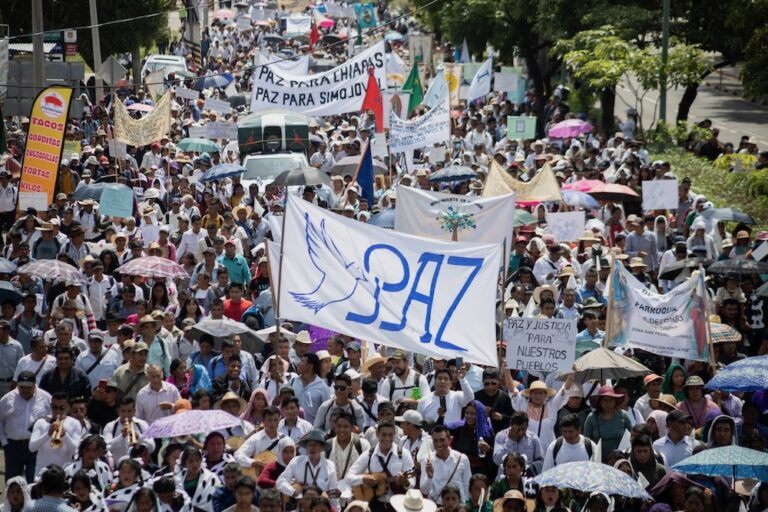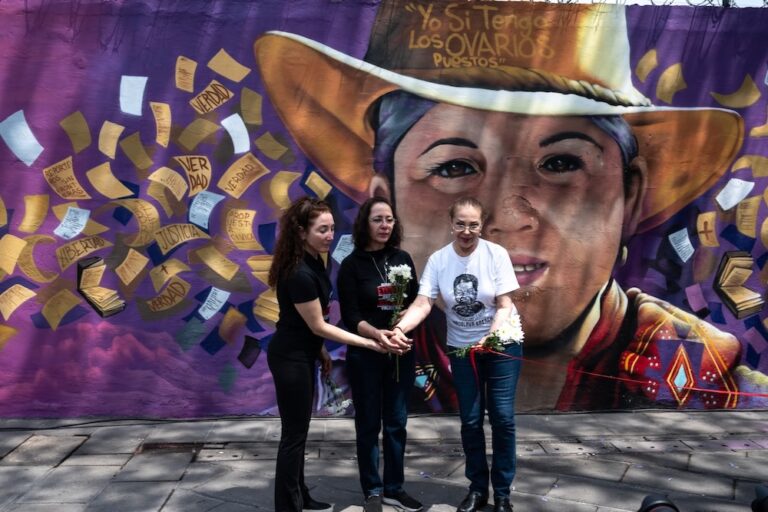Hiram Oliveros Ortiz, an alleged participant in the assassination of "La Mañana" newspaper director Roberto Javier Mora García, was sentenced to 16 years in prison.
(CEPET/IFEX) – On 3 June 2009, Hiram Oliveros Ortiz, an alleged participant in the assassination of “La Mañana” newspaper director Roberto Javier Mora García, was sentenced to 16 years in prison by Judge José Alberto Ciprés Sánchez of the Second Bench Criminal Court in Nuevo Loredo, Tamaulipas state, northern Mexico.
Oliveros Ortiz, who is being held at the Altamira Prison, has been subjected to a five-year long judicial process. He has six days in which to appeal the sentence, first before the Tamaulipas State Supreme Court, then, if necessary, before the National Supreme Court.
Mora García was stabbed to death on 19 March 2009 upon arrival at his apartment in Nuevo Laredo’s Jardín neighbourhood. A week later, on 26 March, the Tamaulipas Public Prosecutor’s Office (Procuraduría) detained an American, Mario Medina Vázquez, and accused him of having assassinated Mora García. They also detained Oliveros Ortiz on allegations that he was an accomplice in the crime. The two men were Mora García’s neighbours.
Since the beginning, there have been anomalies in the investigation into the journalist’s murder, including documentation corroborated by the National Human Rights Commission (Comisión Nacional de Derechos Humanos, CNDH) demonstrating that Medina Vázquez and Oliveros Ortiz were not only detained without a judicial order but also that they were subjected to isolation and torture, initially with the intention of extracting information to accuse a third individual of involvement in the crime, and subsequently in order to obtain a confession from the two men.
Another documented irregularity in the case took place when a Tamaulipas State Human Rights Commission (Comisión Estatal de Derechos Humanos de Tamaulipas) representative and a supposed defence lawyer were present, allegedly to substantiate Medina Vázquez’s and Oliveros Ortiz’s confession, but then failed to defend the two men in the manner that they were legally obliged to and did not take note of the evidence that the two had been beaten.
In addition, the weapon allegedly used to assassinate Mora García does not match the description obtained from an autopsy carried out by the state Public Prosecutor’s Office. The Public Prosecutor’s Office has also been accused of manipulating dates and times when it admitted that it had inspected the home of the two accused individuals, based on a confession by Medina Vázquez, when in fact documents on the case show that Medina Vázquez did not confess to the crime until 24 hours later. Finally, two months after the assassination, on 13 May, Medina Vázquez was killed at a Nuevo Loredo holding facility.
It is also important to note that the Public Prosecutor’s Office failed to call in for questioning all of the witnesses who could have provided information on the case, nor did it look into the victim’s journalism work as part of the investigation. At the time of his death, Mora García’s work included a focus on police corruption and drug-trafficking.
Following the sentencing of Oliveros Ortiz, Mora García’s newspaper, “El Mañana”, issued a statement noting that the journalist was a harsh critic of then Tamaulipas governor Tomás Yarrington and former public prosecutor Francisco Cayuela Villarreal. The paper went on to say that Mora García’s “journalism work and this line of investigation were thrown aside.” The findings of the CNDH that there was “negligence, tampering with evidence and alterations made to statements, among other irregularities” in the investigation, was also not taken into account, “El Mañana” said. The newspaper concluded that, “a triple injustice was committed in Tamaulipas: the assassination of journalist Roberta Mora has not been clarified, nor has the death of Medina Vázquez, and Hiram Oliveros Ortiz’s guilt has not been proven, although they have kept him in prison for five years in a judicial process that was not carried out expeditiously or justly . . . What remains certain is the damage caused to the families of both the victim and the accused individuals.”


